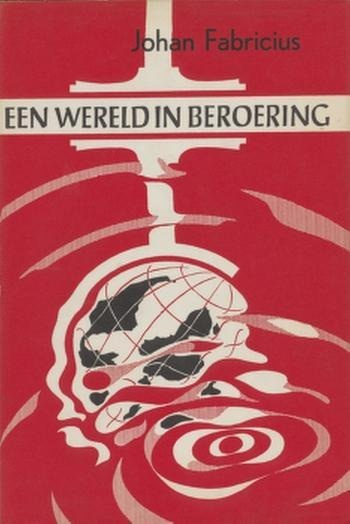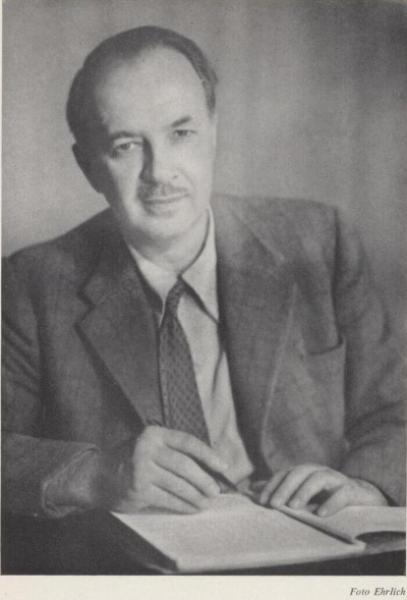Johan Fabricius – does that name sound familiar to you? He has written a number of bestsellers, such as De scheepsjongens van de Bontekoe (Java ho!: The adventures of three boys amid fire, storm and shipwreck) and Het meisje met de blauwe hoed (The girl with the blue hat). Fabricius was born in 1899 in the Dutch East Indies. He was an adventurous man who undertook many journeys to all parts of the world. Perhaps Fabricius inherited his adventurous nature from his father or perhaps his wanderlust originated in the many trips between the Netherlands and the Dutch East Indies that he made during his youth. The travel experiences he gained often served as inspiration for his books. Not only pleasure trips, but also Fabricius’ travel experiences during the war received a place in his literature, for example in his book De oorlog van de kleine paardjes (The war of the small horses, 1975). (KB)
The 1930s were the golden years of Fabricius’ writing career. During this period he also published a number of books inspired by his trips to Italy. (KB) The novel Venetiaansch avontuur (Venetian adventure) (1931) is set in sunny Italy. The story takes place in the Pearl of the North, Venice. The novel follows Walther, a hard-working, handsome boy of Austrian descent. One day he is called to his boss’ office and sent on holiday. At first, Walther does not know what to do with this free time and finally decides to change his life drastically. He wants to look for a ‘dollar princess’ – a rich girl – who will make sure that he will be comfortable for the rest of his life. (Fabricius 1931: 32) So Walther decides to fulfil one of his oldest wishes and leaves for Venice to find his ‘sugarmommy’. Fabricius poetically describes Walther’s impressions during his first encounter with the city of his dreams:
Thus, he greets Venice bare-headed; the sea air softly and refreshingly caresses his temples; he breathes it in with all his lungs, breathes carbon dioxide into his blood, which makes it tingle. He realises that at this moment he is completely happy and feels that it is only with difficulty that he can control himself not to cry. (Fabricius 1931: 44-45)
Many famous places in Venice are described in the book, but the focus of Fabricius’ novel is on Walther’s search for a gentle, but above all rich, girl.
Three years later, in 1934, another book by Fabricius was published that focused on an Italian city: Leeuwen hongeren in Napels (Lions starving in Naples). This novel follows the adventures of Circus Storm that resides in Naples. In the beginning, the circus’ business goes well, but several events cause the circus to go bankrupt. The young lawyer Rambaldo Fittipaldi sees his chance and decides to help the circus, hoping to make a name for himself in Naples. The Italian city is described as not only magical, but also backward. Naples is a place ‘where culture moves forward less hastily, probably because it is so much older, and where a naive and highly inflammable imagination still likes to feed on illusions, which we have learned to call cheap’. (Fabricius 1934: 1)

Many years later, in 1952, Fabricius published a different kind of book. It was the second part of a book series dedicated to his memoirs called Een wereld in beroering (A world in upheaval). In this book Fabricius writes about his life experiences in the period from 1936 to 1946. The focus is mainly on the Second World War and how he experienced it. Fabricius describes how in 1939, just before the outbreak of the World War II, he decided to go to the idyllic island of Capri with his family. However, it no longer turned out to be the Capri that the author had remembered. On 1 September 1939 – Fabricius was still on Capri with his family – Fabricius heard Hitler on the radio telling him that he had invaded Poland. Fabricius then decided to leave Capri and, after an exciting journey back, managed to reach the Dutch border. Een wereld in beroering is a different kind of book than the novels described earlier in this blog and is more informative than entertaining. Nevertheless, Fabricius manages to captivate the reader with his characteristic way of writing.
After the war Fabricius continued to publish books, but these books would not become as successful as those from before the war. In 1981, the writer died in Glimmen, Groningen. (KB)
Bibliography
Fabricius, Johan, Een wereld in beroering: Verdere mémoires (1936-1946) van Johan Fabricius, ‘s-Gravenhage 1952.
Fabricius, Johan, Leeuwen hongeren in Naples, ‘s-Gravenhage 1934.
Fabricius, Johan, Venetiaansch avontuur, ‘s-Gravenhage 1931.
Koninklijke Bibliotheek (KB), ‘Johan Fabricius (1899-1981)’, https://www.kb.nl/themas/nederlandse-literatuur-en-taal/schrijversalfabet/johan-fabricius-1899-1981, consulted on 27 November 2021.
